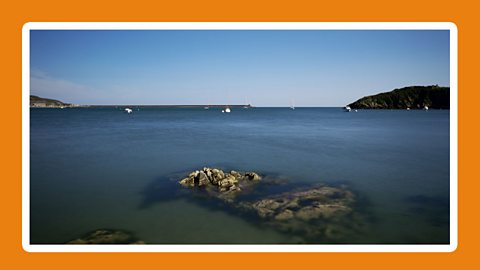
Introduction
Wales is surrounded on three sides by the ocean. To the north and west is the Irish Sea and to the south is the Bristol Channel.
Off the Welsh coast warm water from the Caribbean collides with colder water from the north. These warm waters also bring nutrientsNutrients in food help people and animals to live and grow. A lack of nutrients can make you sick. which are a great source of food. During the summer months lots of sea creatures make their way to our shores to feast in these nutrient rich waters. This attracts many predatorsAnimals that hunt other animals for food., or hunters.
Beneath the surface
During the summer months the deep oceans around Wales are home to lots of marine visitors such as basking sharks, fin whales and numerous different species of fish. They come searching for planktonVery small plants and animals floating in water., small fish and squid.
Video: Large hunters in the Celtic Sea
From blue sharks to dolphins, there is lots of food for large predators in the Celtic Sea.
Marine life
Fin whales

Size
Fin whales are the second largest mammal in the world after the blue whale. They can grow to be 26 meters long.Diet
Fin whales eat crustaceanAn animal with a hard, jointed shell. There are many kinds of crustaceans, including crabs, crayfish, lobsters, and shrimps., squid and fish.Did you know?
Fin whales can live for an impressive 90 years.
Basking sharks

Size
This is our largest visiting fish. It can grow to be more than 10 meters long, the same size as a double decker bus.Diet
Basking sharks eat some of the smallest creatures in the ocean. They survive on a diet of plankton, microscopic plants and animals. They swim into the current with their huge mouths wide open ready to feed.Did you know?
Despite their size and appearance Basking sharks do not pose a threat to humans. However, it is not recommended you go near them.
Sunfish
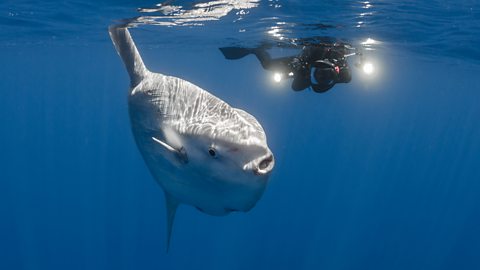
Size
Sunfish are round and flat, they look like giant heads or plates. They can be over 3 meters long and have huge fins on top and under their bodies.Diet
Sunfish feast on a diet of jellyfish.Did you know?
Sunfish are often spotted resting on their sides on the surface of the sea, enjoying the sunshine - which is where the name sunfish comes from.
Predators
This wealth of marine life also brings many predators to our shores. Predators live by hunting, killing and eating other animals for food. These fearsome predators can be spotted off the coast of Wales throughout the summer months.
Blue shark

How to spot them
These torpedo shaped sharks have very long front fins. They can usually be found about 10 miles offshore.Prey
As well as hunting fish and squid, blue sharks are scavengers. This means that they’ll find and eat animals that are already dead.Size
Blue sharks grow to be over 3 meters long.Did you know?
Blue sharks have an amazing sense of smell. This allows them to detect blood from miles and miles away.
Atlantic bluefin tuna

How to spot them
Torpedo shaped bluefin tunas are really fast. They can travel at speeds of 40 miles an hour, the speed of a car.Prey
They are tremendous predators. They hunt for fish like herring, mackerel, and even eels. They have incredible eyesight and they can swallow their prey whole.Size
Some tuna can grow to be as large as polar bears.Did you know?
Bluefish tuna need to move all the time. Just like sharks, they rely on a constant flow of water over their gills to obtain oxygen.
Common dolphins
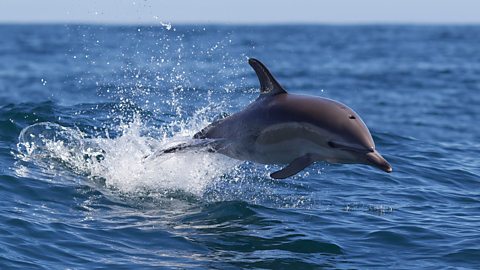
How to spot them
They are very sociable and are usually found in groups of hundreds or thousands, travelling, playing and eating together. These groups are called pods.Prey
They eat small fish such as mackerel, anchovies, lanternfish, sprats, squid and octopus.Size
These dolphins can grow up to 2.5 meters long.Did you know?
Dolphins use echolocation. This means they make sounds to build a picture of their surroundings.
Good news
Spotting predators like blue sharks, tuna and dolphins in the deep oceans around Wales is a really positive sign. This tells us that our seas are healthy and that there is plenty of prey for them to feast on.
Quiz: What predators are in the Celtic Sea?

Where next?
What happens when plastics get into the ocean?
Find out what impact plastic waste has on wildlife in the sea.
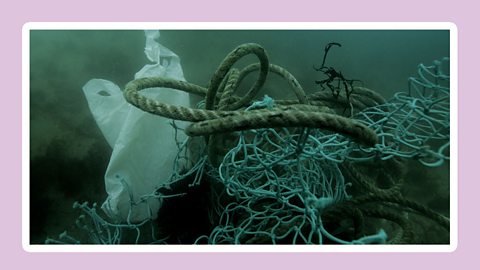
Can lobster fishing be sustainable?
How has fishing changed in Wales and how does this affect the food chain?
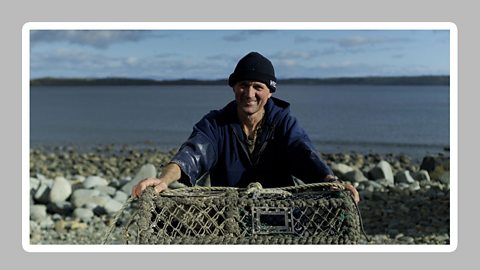
KS2 Sustainability
A collection of lessons for pupils aged 7 to 11

More on Wildlife
Find out more by working through a topic
- count2 of 5
